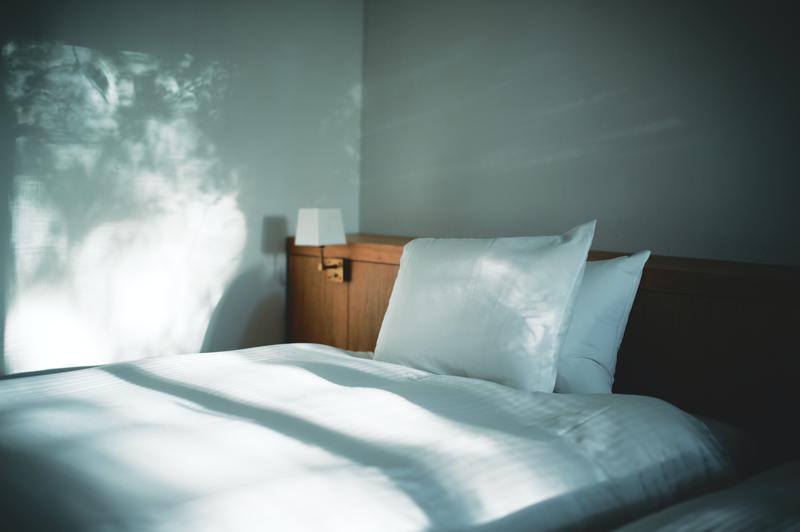Are you having difficulty learning how to tell if your mattress has mold? Worry not, because this is just the perfect article for you.

What Causes Mold?
Mold thrives in damp environments, such as around roof, window, pipe leaks, or in areas with flooding. It loves to grow on paper, cardboard, ceiling tiles, and wood goods.
Dust, paints, wallpaper, insulation, drywall, rugs, fabric, and upholstery all harbor mold. Cladosporium, Penicillium, and Aspergillus are the most common indoor molds.
You can find mold both indoors and outside. Open doorways, windows, vents, and heating and air conditioning systems can all allow mold to infiltrate your home.
Mold in the atmosphere can stick to clothing, shoes, and pets, then be brought inside. Mold spores will thrive in areas with excessive moisture, such as when leaking has happened in roofs, pipes, walls, plant pots, or where flooding has occurred.
High humidity, uncontrolled condensation, and simple and sluggish plumbing leaks are the most leading triggers of mold growth. However, learning how to prevent mold infestation entails far more than calling a plumber.
A plumber is a fantastic expert option for repairing a minor water leak before it becomes a major mold issue. Plumbers recognize the tell-tale indicators of concealed mold problems and warn you of impending calamities.
When it comes to mold diagnosis, a plumber’s knowledge is vital. They can also be highly beneficial in terms of mold protection.
The first step in preventing mold in your house is to understand what produces it. Then understanding the repercussions of lean is beneficial.
Here is a guide article about what color mold is to help identify what type of mold you need to address.
Mold thrives in many building materials because they supply the proper nutrients. Wet cellulose materials, such as paper and paper goods, cardboard, ceiling tiles, and wood products, are especially favorable to mold formation.
Mold can develop in various materials, including dust, paints, wallpaper, insulating materials, drywall, carpet, fabric, and upholstery. Here is a guide that can help you learn more about the symptoms and solutions to mattress molds.
How To Tell If A Mattress Has Mold
Mold or mildew is minuscule at first, so you won’t be able to see the early signs until it has grown large enough to be seen with the human eye. This problem is more common in those who don’t turn and check their mattress when changing the sheets regularly.
Mold under the mattress usually manifests itself first as a visible appearance of tiny black dots, which you can see long before you notice any health issues or a stench. Keeping a close eye on your mattress is an essential strategy for preventing mildew growth and occurrence.
Here are the following signs and symptoms if your mattress has mold infestations:
1. Identify or detect the smell or scent
Mold spores have a powerful and persistent odor that you might not identify with mold. When you think of it, you probably think of decaying food, which has a putrid smell, whereas spores on your mattress can have a damp or dank odor that you could detect over time.
If you detect this odor, keep looking for the spores to resolve the problem. You may smell the scent before you see any substantial density of mildew on the mattress, depending on where they are and how dense the concentration of mold is.
2. Notice changes or occurrences on health issues
Spore exposure can be dangerous to one’s health, especially if one is already unwell or has severe allergies. Mold under your mattress is especially dangerous since you spend so much time in bed and are thus exposed to it for considerably longer than you would be in another section of your house.
When exposed to mold for a long time, you’ll notice allergy-like symptoms like headaches, itchy eyes, congestion, and weariness. If you’re experiencing these symptoms incredibly quickly after waking up, your chances of exposure are high.
3. Check the appearance
Moldy mattresses, whereas tiny black patches occur along the mattress’s underside, either touching the ground, bed slats, or box spring, are one of the first indicators of mold. This black mold is mildew, and if left untreated, it will spread to cover the mattress, causing damage and producing spores that can be harmful to your health.
Mold appears as a fuzzy covering in huge pieces, usually in white or black. You can identify mildew by its dotty, black look, specific to this form of fungus.
Mildew is significantly more frequent beneath mattresses, and you can tell if it’s there by how easily it wipes away with a damp towel. Here is a guide article that can help you on how to remove mold from your mattress.
Conclusion
These are the essential facts you need to know and will aid you in understanding how to tell if your mattress has mold. You can click on the suggested links for more information.
